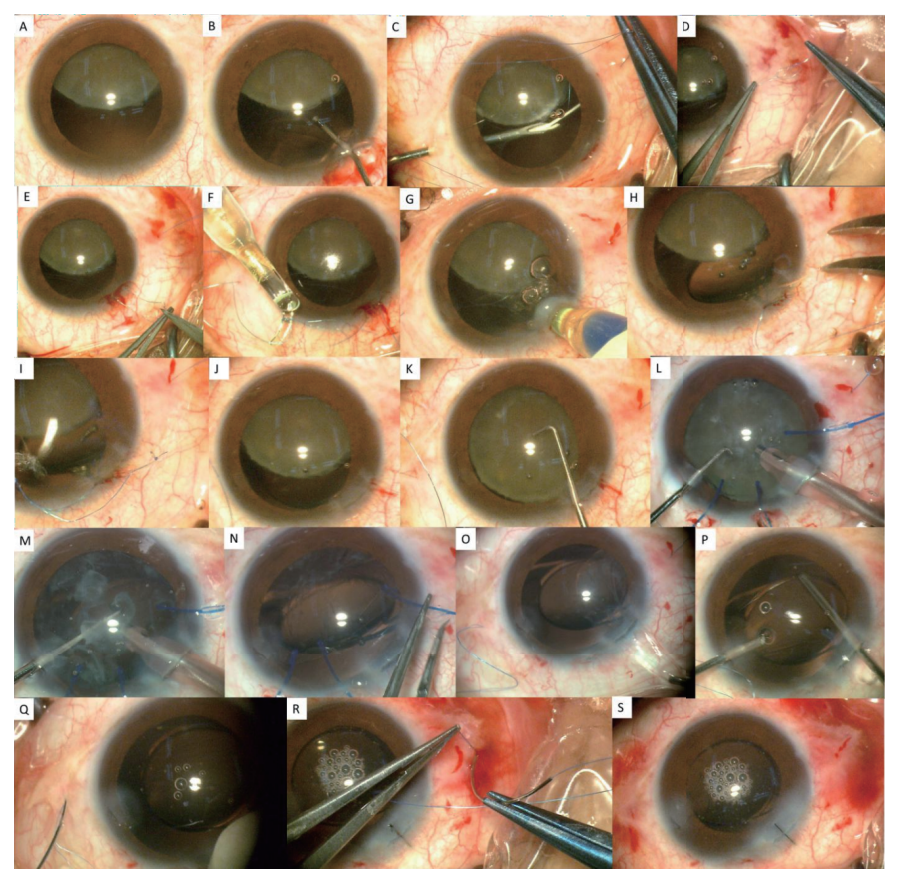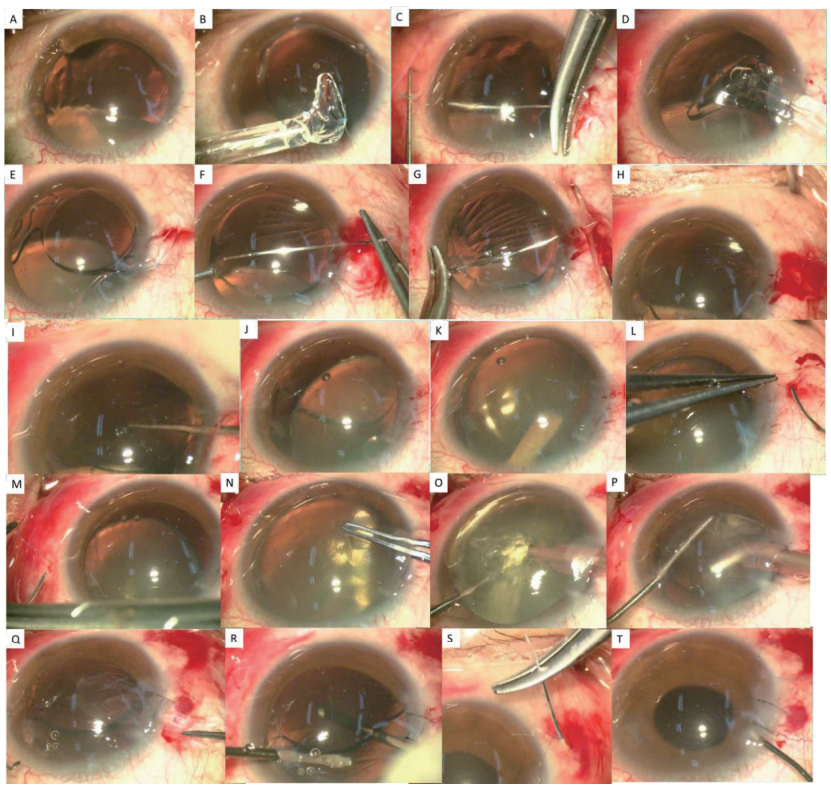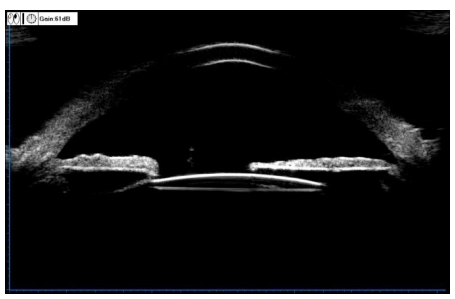1、Cecchi A, Ogawa N, Martinez HR, et al. Missense mutations in FBN1
exons 41 and 42 cause Weill-Marchesani syndrome with thoracic aortic
disease and Marfan syndrome[ J]. Am J Med Genet A, 2013, 161A(9):
2305-2310.Cecchi A, Ogawa N, Martinez HR, et al. Missense mutations in FBN1
exons 41 and 42 cause Weill-Marchesani syndrome with thoracic aortic
disease and Marfan syndrome[ J]. Am J Med Genet A, 2013, 161A(9):
2305-2310.
2、郑丹莹, 吴文捷, 杨文辉. 马方综合征晶状体半脱位不同手术方
法的探讨[ J]. 中华显微外科杂志, 2006, 29(4): 315-317.
Zheng DY, Wu WJ, Yang WH. Discussion on di�erent surgical methods
of lens subluxation in Marfan syndrome[ J]. Chinese Journal of
Microsurgery. 2006, 29(4): 315-317.郑丹莹, 吴文捷, 杨文辉. 马方综合征晶状体半脱位不同手术方
法的探讨[ J]. 中华显微外科杂志, 2006, 29(4): 315-317.
Zheng DY, Wu WJ, Yang WH. Discussion on di�erent surgical methods
of lens subluxation in Marfan syndrome[ J]. Chinese Journal of
Microsurgery. 2006, 29(4): 315-317.
3、王洁, 刘七平, 楼辉锋, 等. 晶状体脱位手术治疗的临床分析[ J].
国际眼科杂志, 2020, 20(5): 921-923.
Wang J, Liu QP, Lou HF, et al. Retrospective analysis of surgical
strategies for lens subluxation[ J]. Int Eye Sci, 2020, 20(5): 921-923.王洁, 刘七平, 楼辉锋, 等. 晶状体脱位手术治疗的临床分析[ J].
国际眼科杂志, 2020, 20(5): 921-923.
Wang J, Liu QP, Lou HF, et al. Retrospective analysis of surgical
strategies for lens subluxation[ J]. Int Eye Sci, 2020, 20(5): 921-923.
4、Khokhar S, Gupta S, Nayak B, et al. Capsular hook-assisted implantation
of modified capsular tension ring[ J]. BMJ Case Rep, 2016, 2016:
bcr2015214274.Khokhar S, Gupta S, Nayak B, et al. Capsular hook-assisted implantation
of modified capsular tension ring[ J]. BMJ Case Rep, 2016, 2016:
bcr2015214274.
5、Chen Z, Zhang M, Deng M, et al. Surgical outcomes of modified
capsular tension ring and intraocular lens implantation in Marfan
syndrome with ectopia lentis[ J]. Eur J Ophthalmol, 2022, 32(2): 924-
932.Chen Z, Zhang M, Deng M, et al. Surgical outcomes of modified
capsular tension ring and intraocular lens implantation in Marfan
syndrome with ectopia lentis[ J]. Eur J Ophthalmol, 2022, 32(2): 924-
932.
6、Jin H, Zhang Q, Zhao P, et al. Intrascleral fixation of implantable
polypropylene capsular hook(s) to reconstruct capsular support for
out-of-the-bag intraocular lens fixation in vitrectomized eyes[ J].
Retina, 2022, 42(9): 1816-1821.Jin H, Zhang Q, Zhao P, et al. Intrascleral fixation of implantable
polypropylene capsular hook(s) to reconstruct capsular support for
out-of-the-bag intraocular lens fixation in vitrectomized eyes[ J].
Retina, 2022, 42(9): 1816-1821.
7、尹利, 曲超. 新式无线结巩膜层间Z字缝合法在人工晶状体悬吊
术中的应用分析[ J]. 实用医院临床杂志, 2020, 17(3): 27-30.
Yin L, Qu C. Applied analysis of new knotless technique for scleral
interlaminar Z-suture in intraocular lens suspension[ J]. Practical
Journal of Clinical Medicine, 2020, 17(3): 27-30.尹利, 曲超. 新式无线结巩膜层间Z字缝合法在人工晶状体悬吊
术中的应用分析[ J]. 实用医院临床杂志, 2020, 17(3): 27-30.
Yin L, Qu C. Applied analysis of new knotless technique for scleral
interlaminar Z-suture in intraocular lens suspension[ J]. Practical
Journal of Clinical Medicine, 2020, 17(3): 27-30.
8、Merriam JC, Zheng L. Iris hooks for phacoemulsification of the
subluxated lens[ J]. J Cataract Refract Surg, 1997, 23(9): 1295-1297.Merriam JC, Zheng L. Iris hooks for phacoemulsification of the
subluxated lens[ J]. J Cataract Refract Surg, 1997, 23(9): 1295-1297.
9、陈佳惠, 景清荷, 唐雅婷, 等. 囊袋拉钩联合Cionni改良囊袋张力
环在马方综合征晶状体不全脱位手术中的应用[ J]. 中国眼耳
鼻喉科杂志, 2017, 17(5): 333-336.
Chen JH, Jing QH, Tang YT, et al. Application of capsular retractor
combined with Cionni modified capsular tension ring during lens
subluxation surgery in Marfan syndrome[ J]. Chin J Ophthalmol and
Otorhinolaryngol, 2017, 17(5): 333-336.陈佳惠, 景清荷, 唐雅婷, 等. 囊袋拉钩联合Cionni改良囊袋张力
环在马方综合征晶状体不全脱位手术中的应用[ J]. 中国眼耳
鼻喉科杂志, 2017, 17(5): 333-336.
Chen JH, Jing QH, Tang YT, et al. Application of capsular retractor
combined with Cionni modified capsular tension ring during lens
subluxation surgery in Marfan syndrome[ J]. Chin J Ophthalmol and
Otorhinolaryngol, 2017, 17(5): 333-336.
10、郭跃, 郭晓红, 郑丹莹. 现代新式辅助器械在晶状体半脱位手术
治疗中的应用[ J]. 国际眼科纵览, 2013, 37(5): 317-321.
Guo Y, Guo XH, Zheng DY. Application of novel auxiliary apparatus
on the treatment of lenses subluxation[ J]. International Review of
Ophthalmology, 2013, 37(5): 317-321.郭跃, 郭晓红, 郑丹莹. 现代新式辅助器械在晶状体半脱位手术
治疗中的应用[ J]. 国际眼科纵览, 2013, 37(5): 317-321.
Guo Y, Guo XH, Zheng DY. Application of novel auxiliary apparatus
on the treatment of lenses subluxation[ J]. International Review of
Ophthalmology, 2013, 37(5): 317-321.
11、方健, 张晓丹, 吕红. 晶状体超声粉碎联合玻璃体切除术治疗外
伤性晶状体脱位[ J]. 国际眼科杂志, 2014, 14(12): 2252-2253.
Fang J, Zhang XD, Lü H. Phacofragmentation combined with
vitrectomy in the treatment of traumatic dislocation lens[ J]. Int Eye
Sci, 2014; 14( 12) : 2252 - 2253.方健, 张晓丹, 吕红. 晶状体超声粉碎联合玻璃体切除术治疗外
伤性晶状体脱位[ J]. 国际眼科杂志, 2014, 14(12): 2252-2253.
Fang J, Zhang XD, Lü H. Phacofragmentation combined with
vitrectomy in the treatment of traumatic dislocation lens[ J]. Int Eye
Sci, 2014; 14( 12) : 2252 - 2253.
12、Girard LJ. Pars Plana phacoprosthesis (aphakic intraocular implant): a
preliminary report[ J]. Ophthalmic Surg, 1981, 12(1): 19-22.Girard LJ. Pars Plana phacoprosthesis (aphakic intraocular implant): a
preliminary report[ J]. Ophthalmic Surg, 1981, 12(1): 19-22.
13、Kristianslund O, Sandvik GF, Drolsum L. Long-term suture breakage
after scleral fixation of a modified capsular tension ring with
polypropylene 10-0 suture[ J]. Clin Ophthalmol, 2021, 15: 2473-2479.Kristianslund O, Sandvik GF, Drolsum L. Long-term suture breakage
after scleral fixation of a modified capsular tension ring with
polypropylene 10-0 suture[ J]. Clin Ophthalmol, 2021, 15: 2473-2479.
14、Snyder ME, Perez MA. Tiltless and centration adjustable scleral�sutured posterior chamber intraocular lens[ J]. J Cataract Refract Surg,
2014, 40(10): 1579-1583.Snyder ME, Perez MA. Tiltless and centration adjustable scleral�sutured posterior chamber intraocular lens[ J]. J Cataract Refract Surg,
2014, 40(10): 1579-1583.
15、Wasiluk E, Krasnicki P, Dmuchowska DA, et al. The implantation
of the scleral-fixated posterior chamber intraocular lens with
9/0 poly propylene sutures-Long-term v isual outcomes and
complications[ J]. Adv Med Sci, 2019, 64(1): 100-103.Wasiluk E, Krasnicki P, Dmuchowska DA, et al. The implantation
of the scleral-fixated posterior chamber intraocular lens with
9/0 poly propylene sutures-Long-term v isual outcomes and
complications[ J]. Adv Med Sci, 2019, 64(1): 100-103.






